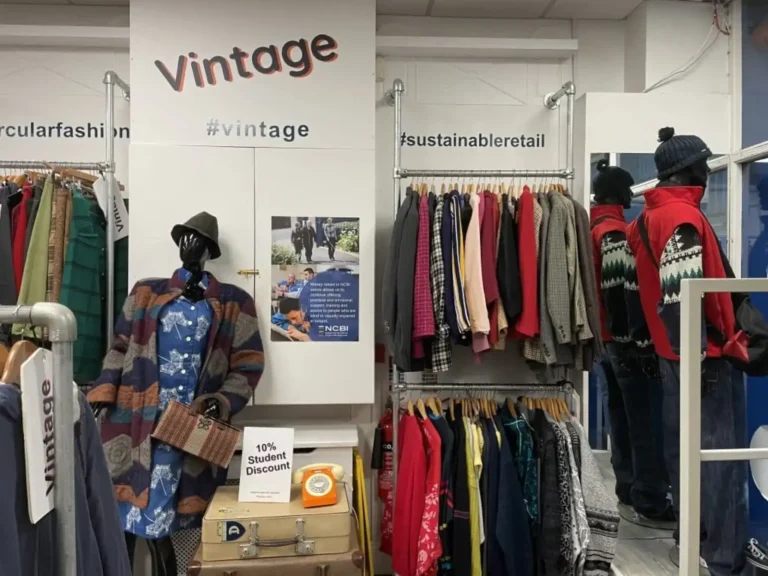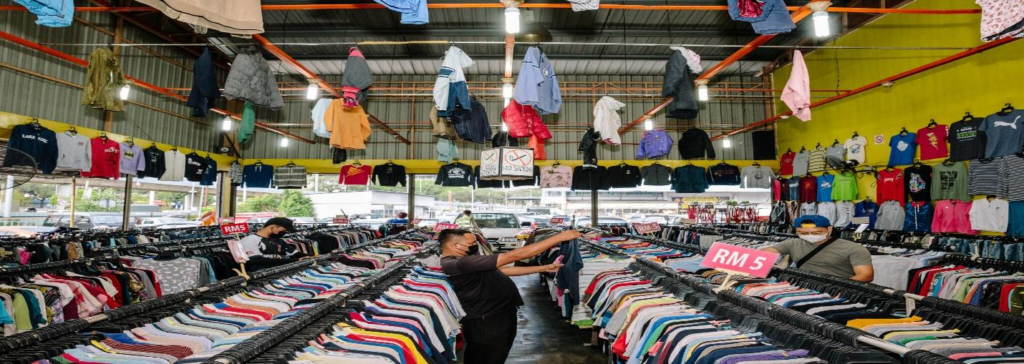Thrifting, a Blessing to Charities and Local Communities
Thrift stores have become increasingly well-liked in recent years, not just as an affordable but also environmentally and socially conscious option for consumers. Although the advantages of buying used goods for the environment are becoming more well-known, thrift stores provide advantages that go beyond sustainability. People can make a significant contribution to charity causes and the improvement of their local communities by patronizing thrift stores. This article examines the many uses of thrifting that go beyond waste reduction and cost savings, emphasizing the important roles it plays in the social and economic advancement of local communities.
1. Supplying Reasonably Priced Clothing to All
Thrift stores primarily help local communities by providing reasonably priced products and clothing. Finding fashionable yet practical clothing can be difficult for people in financial distress, particularly when the price of new goods is considerable. By providing gently worn apparel, accessories, and home goods at a significant discount from their original cost, thrift stores fill this vacuum in the market.

This accessibility helps low-income families to satisfy their clothing needs without putting a strain on their finances, allowing them to pay for other necessities like food, housing, and medical care. Thrifting provides people with the opportunity to dress nicely regardless of their financial status so playing a critical role in fostering financial security and dignity for all community members.
2. Generating Employment and Financial Prospects
By generating jobs, thrift stores can boost the local economy. To maintain efficient operations, charity stores need a diversified workforce for tasks like pricing, inventory management, sorting, and customer service. Many secondhand shops, especially charitable ones, hire locals, giving those who might have difficulties in the formal job market a chance to work.

Thrift stores occasionally recruit people who are underprivileged or marginalised on purpose. Examples of these people include those who are transitioning out of homelessness, those who are recovering from addiction, and those with impairments. Thrift stores support workforce development and assist people acquire critical job skills that can lead to long-term career prospects by providing these people with steady employment.
Furthermore, as thrift stores expand, they frequently provide indirect support to nearby companies. For instance, the money raised from sales might be put back into the neighborhood to support initiatives, events, and services. Particularly independent thrift businesses frequently work with tiny, neighborhood suppliers for supplies, labor, or other needs, supporting the local economy in the process.
3. Supporting Charitable Causes
Many thrift stores are distinct in that they have strong ties to nonprofits. The money raised by thrift stores run by charitable organisations, like Goodwill and The Salvation Army, is frequently used to support a range of social activities, such as housing aid, job training, addiction rehabilitation centers, and educational services. Customers who shop at these establishments are directly funding these philanthropic endeavors, enabling their purchases to make a significant impact on the community’s well-being.

For instance, Goodwill has secondhand shops all around the world and uses the money it makes from sales to provide job placement and training services to people who are having trouble finding employment. It might not occur to shoppers that each time they buy a used item, they are assisting someone in obtaining employment or educational prospects. Thrift stores enable charitable groups to sustain their vital services to the underprivileged by acting as a financial lifeline for them.
4. Encouraging a Giving Back Culture
Thrift stores not only help customers, but they also inspire neighbors to donate their own belongings to worthy causes. One easy method that people can support their local community is by making donations to thrift stores. People can offer unwanted furniture, appliances, or apparel a second chance at life by donating them to thrift stores instead of throwing them out.

These donations are then sold again, with the revenue frequently going to the previously mentioned philanthropic groups. Giving to thrift stores encourages a culture of giving back, where individuals are motivated to make a significant contribution to their community. Additionally, it reduces the amount of waste that winds up in landfills by offering an environmentally beneficial way to get rid of unneeded products. Thus, the concepts of sustainability, volunteerism, and social responsibility are greatly enhanced by thrift stores.
5. Fostering a Community Feeling
Thrift stores frequently act as gathering places for the community, uniting individuals around shared interests. Thrift stores can serve as a central location for community involvement initiatives, such as neighborhood gatherings, local donation drives, and volunteer opportunities. Volunteers from the neighborhood are frequently used by thrift stores to sort, price, and arrange their inventory.

One practical way that locals may give back to their community is by volunteering at thrift stores. For retirees, students, or anybody searching for opportunities to engage in community service, this might have special value. The connections made via these exchanges fortify the community’s social fabric and foster a sense of solidarity.
Thrift stores help local nonprofits and charities by giving them much-needed funds, in addition to promoting human relationships. Certain thrift stores collaborate with particular groups, allocating a segment of their earnings to causes like preventing homelessness, providing mental health assistance, or supporting animal shelters. Thrift stores serve as a conduit between the public and neighbourhood charities in this way, enabling people to positively impact their community just via their purchases.
6. Encouraging Eco-Friendly Lifestyles
Thrifting is a naturally sustainable practice since it minimizes waste and lowers the need for the manufacturing of new clothing. Customers who buy used goods lessen the impact they have on the environment and the natural resources used in the production of new goods. With environmental issues growing more pressing in today’s world, thrifting’s environmentally friendly component is very crucial.

Thrift stores encourage customers to adopt more environmentally friendly lifestyles by teaching them the value of recycling and reusing materials and motivating them to make more thoughtful purchasing decisions. Thrift stores promote sustainability in the community by encouraging people to adopt more environmentally friendly attitudes and practices.
Additionally, thrift stores provide a great venue for repurposing and upcycling. Creative consumers frequently purchase used goods with the idea of repurposing them for new projects, such as upcycling furniture for a do-it-yourself project or reusing an old garment as a chic top. Reusing things helps the environment and gives people the opportunity to express their creativity and learn new skills.
7. Preserving Local History and Culture
Many thrift stores provide customers a window into the past and culture of their neighbourhood by selling vintage and antique goods. Whether they are antiques, rare treasures, or pieces of vintage clothing, these objects frequently have interesting histories attached to them. Thrift stores assist in preserving local history by keeping and selling these artefacts, enabling customers to connect with the past and value their community’s cultural heritage.

Thrift stores occasionally collaborate with regional producers or artists, giving them a venue to market their products. This encourages the community’s distinctive arts and crafts as well as local entrepreneurship.
Conclusion:
Thrifting is a great way to support local communities and charity causes, and it’s much more than just a means to acquire unusual, affordable stuff. Thrift stores are essential to the development of more robust and resilient communities because they offer affordable clothing, generate employment, and support significant social initiatives. Furthermore, thrifting empowers people to make good decisions about their purchases by promoting a culture of sustainability and giving back. Participating in the thrift store ecosystem, whether through volunteering, shopping, or donation, supports individuals in need and enhances the community’s general well-being.
Remember that the next time you shop at a thrift store, your purchase is an investment in your community and a step toward a future that is more sustainable and socially conscious. It’s not simply a great deal.
